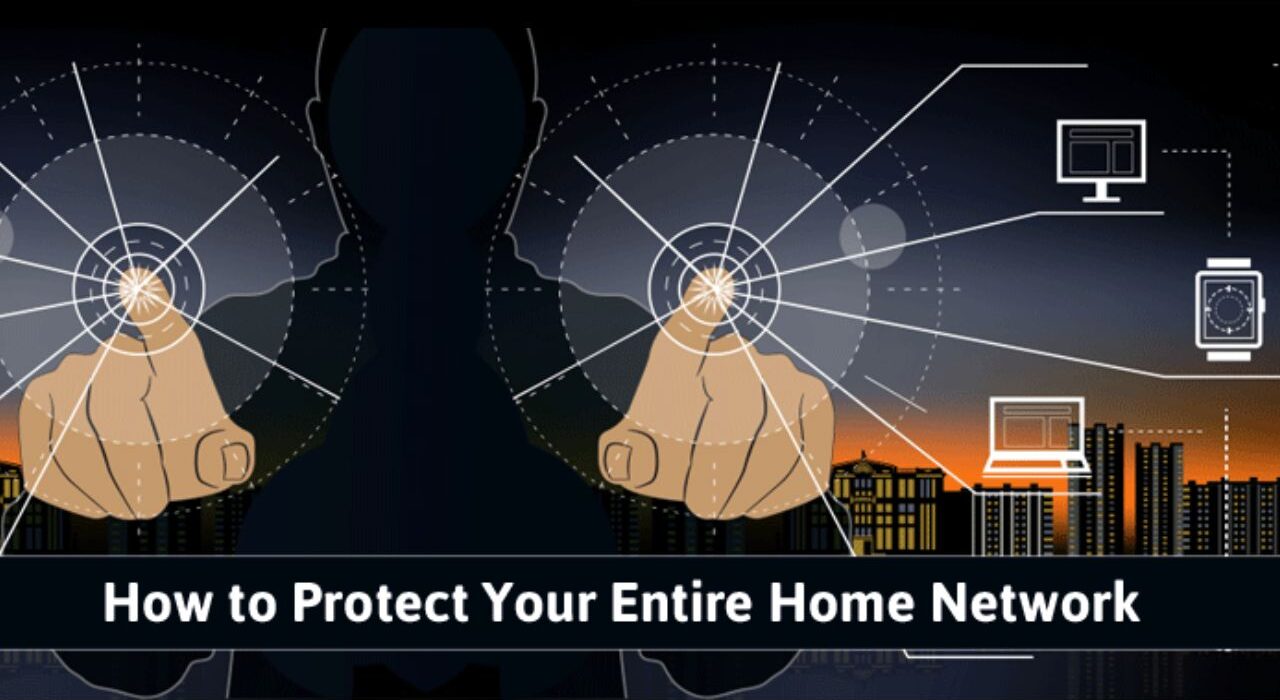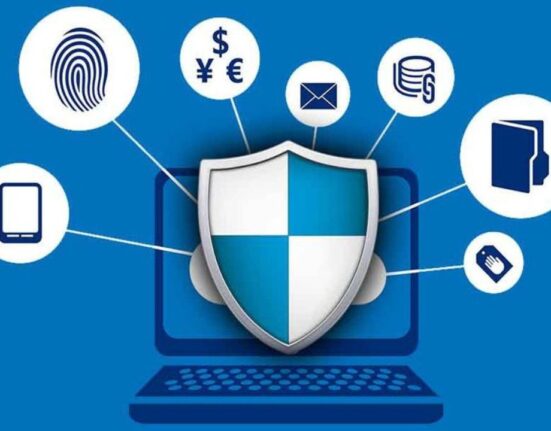DIY Home Network Protection From Hackers, Secure your home network by using strong, unique passwords for WiFi and devices, enabling firewall and encryption settings, updating firmware regularly, and using antivirus software. Also, restrict remote access to devices when unnecessary and consider using a VPN for added protection.
Protect Your Home Network from Hackers with These DIY Tips
Securing your home network is more important than ever. With the rise of smart devices and IoT (Internet of Things) technology, hackers have more entry points than ever to infiltrate your network and compromise your personal information. Fortunately, you can take several DIY steps to enhance your home network’s security and protect yourself from cyber threats.
-
Change Default Passwords
One simplest yet most effective way to secure your home network is to change the default passwords on your router and all connected devices. Default passwords are often easy for hackers to guess, making them vulnerable to attacks. Choose strong, unique passwords for each device and update them regularly to keep your network secure.
-
Enable Network Encryption
Encrypting your network traffic adds an extra layer of security by scrambling the data sent between your devices and router, making it unreadable to anyone trying to intercept it. Most modern routers offer WPA2 or WPA3 encryption options, which you can enable in the router settings for enhanced security.
-
Update Firmware Regularly
Firmware updates contain patches for known security vulnerabilities and bugs, so keeping your router’s firmware up to date is crucial. Check for updates regularly, either through the router’s web interface or the manufacturer’s website, and install them as soon as they become available to ensure your network remains protected.
-
Enable Firewall Protection
Most routers have built-in firewall protection, which helps filter incoming and outgoing traffic to block potentially malicious connections. Ensure your router’s firewall is enabled and properly configured to provide maximum protection against cyber threats.
-
Implement MAC Address Filtering
MAC address filtering lets you specify which devices can connect to your network based on their unique MAC addresses. By allowing authorized devices and blocking all others, you can prevent unauthorized access to your network and keep hackers at bay.
-
Use a VPN
A Virtual Private Network (VPN) encrypts your internet connection and masks your IP address, making it much harder for hackers to intercept your data or track your online activities. Consider using a VPN, especially when accessing your home network remotely or connecting to public WiFi hotspots.
-
Disable Remote Management
Remote management features on routers allow you to access and configure your network settings from anywhere, but they pose a security risk if enabled. Disable remote management unless necessary to minimize the chances of unauthorized access to your router.
-
Monitor Network Traffic
Keeping an eye on your network traffic can help you identify any suspicious activity or unauthorized devices connected to your network. Use network monitoring tools or apps to track data usage, identify potential security threats, and take appropriate action to protect your network.
-
Secure IoT Devices
Due to lax security measures, smart home devices such as cameras, thermostats, and voice assistants are often vulnerable to cyber attacks. Secure your IoT devices by changing default passwords, updating firmware regularly, and segmenting them onto a separate network to prevent them from compromising your main network.
-
Educate Yourself and Your Family
Finally, educating yourself and your family about cybersecurity and safe internet practices is crucial for maintaining a secure home network. Teach them about phishing scams, the dangers of clicking on suspicious links or downloading unknown files, and the importance of keeping software up to date.
DIY Guide to Safeguarding Your Home Network Against Hackers
The Need for Home Network Protection
In an increasingly digital world, the security of your home network is paramount. With the rise of cyber threats, safeguarding your data and devices from hackers is more important than ever. This DIY guide empowers you to take proactive steps to secure your home network effectively. The Importance of Safeguarding Your Home Network: Ensuring Comprehensive Protection Against Cyber Threats and Unauthorized Access.
Assessing Your Current Network Security
Before taking protective measures, it’s essential to evaluate the current state of your home network security. Conducting a thorough assessment will help identify vulnerabilities that hackers could exploit. Evaluating your network’s existing security measures will identify potential vulnerabilities and enhance protection against cyber threats.
Strengthening Password Security
One simplest yet most effective way to enhance your home network security is by strengthening your passwords. Opt for complex passwords that include a combination of letters, numbers, and special characters. Consider using a reputable password manager to store and manage your passwords securely. Enhancing password security involves:
- Creating complex passwords with a mix of characters.
- Utilizing a reputable password manager.
- Enabling two-factor authentication for added protection against unauthorized access.
Implementing Two-Factor Authentication (2FA)
Adding an extra layer of security with two-factor authentication (2FA) significantly reduces the risk of unauthorized access to your accounts. Enable 2FA wherever possible, especially for sensitive accounts such as email, banking, and social media. Enabling Two-Factor Authentication (2FA) enhances security by requiring users to provide two verification forms before accessing their accounts, bolstering protection against unauthorized access.
Updating Firmware and Software Regularly
Keep your router firmware and all connected devices up to date with the latest security patches and updates. Manufacturers often release patches to address known vulnerabilities, so staying current is crucial in thwarting potential cyber threats. Ensuring consistent updates to firmware and software is essential for maintaining the security and functionality of devices, as it addresses vulnerabilities and enhances performance over time.
Securing Your WiFi Network
Secure your WiFi network by changing the default network name (SSID) and password. Disable remote access to your router’s administration panel and enable network encryption, such as WPA2 or WPA3, to prevent unauthorized users from accessing your network. Protecting your WiFi network involves:
- Fortifying its defenses against unauthorized access by changing default settings.
- Enabling encryption.
- Implementing strong authentication measures.
Enabling Network Firewall Protection
Activate the firewall on your router to filter incoming and outgoing traffic, providing an additional barrier against malicious activities. Configure firewall settings to block potentially harmful content and restrict access to specific ports as needed. Activating network firewall protection creates a virtual barrier that filters incoming and outgoing traffic, bolstering defense against cyber threats and unauthorized access attempts.
Setting Up Guest Network Access
Consider setting up a separate guest network for visitors to isolate their devices from your primary network. This prevents guests from inadvertently compromising network security and limiting their access to sensitive data. Establishing a guest network access entails configuring a separate WiFi network to provide visitors with internet connectivity while isolating them from the primary network for enhanced security.
Monitoring Network Activity
Monitor your home network regularly for unusual or suspicious activity. Utilize network monitoring tools and intrusion detection systems to detect and respond to potential security breaches promptly. Keep a vigilant eye on the flow of data within your network to detect any suspicious or unauthorized activities, ensuring proactive security measures are in place.
Educating Yourself and Your Family
Lastly, educate yourself and your family members about cybersecurity best practices. Raise awareness about common phishing scams, social engineering tactics, and the importance of practicing good digital hygiene to mitigate security risks effectively. The Importance of Educating Yourself and Your Family Members About Cybersecurity Best Practices.
Empowering Homeowners with Network Security
Following these DIY home network protection strategies, you can fortify your defenses against hackers and safeguard your digital assets and privacy. Take proactive steps today to ensure a secure and resilient home network environment for you and your loved ones. Equipping homeowners with robust network security measures to fortify their defenses against cyber threats and ensure the safety of their digital assets and privacy.
Some Points of DIY Home Network Protection From Hackers

DIY Home Network Protection from Hackers: Techniques and methods homeowners can employ themselves to safeguard their home network from unauthorized access and cyber threats. DIY solutions include setting firewalls, implementing strong passwords, regularly updating firmware, and monitoring network activity.
Best DIY Home Network Protection from Hackers: The most effective and reliable methods for securing a home network without professional assistance often involve researching and implementing a combination of security measures tailored to one’s specific needs and technical capabilities.
How to Protect Your Home Network from Hackers: Guidance on safeguarding a residential network infrastructure from malicious cyber activities. Tips may include securing routers, encrypting data transmissions, and detecting and removing malware or unauthorized devices.
How to Protect WiFi from Neighbors: Access to one’s WiFi network by nearby residents. Solutions may involve:
- Establishing strong encryption.
- Hiding the network name (SSID).
- Filtering MAC addresses to restrict access to approved devices.
How to Secure My WiFi Router at Home: Step-by-step instructions or guidelines for enhancing the security of a wireless router in a home environment. Responses may cover changing default login credentials, enabling network encryption (e.g., WPA2), turning off remote management, and implementing access control measures.
Home Network Security Best Practices: A set of recommended strategies and protocols for ensuring the security of a residential network. It may include regularly updating software, enabling firewalls, using strong authentication methods, and educating household members about cybersecurity risks.
How to Protect Your Router from Hackers: Measures to defend the central point of a home network, the router, from potential cyber intrusions. Responses may include:
- Keeping firmware up to date.
- Turning off unnecessary services.
- Changing default settings.
- Using strong administrator passwords.
Home Network Security Checklist: A comprehensive list of items to review or implement to enhance the security posture of a residential network. The checklist might include changing default passwords, enabling encryption, configuring firewall settings, and conducting regular security audits.
Conclusion
Protecting your home network from hackers requires a proactive approach and a combination of DIY security measures. By following the tips outlined above and staying vigilant, you can significantly reduce the risk of cyber threats and keep your personal information safe and secure. Remember, it’s better to be safe than sorry when it comes to cybersecurity.
FAQ
What Can Be Used to Protect a Network From Hackers?
Networks can be protected from hackers by implementing strong firewalls, regularly updating software and security patches, using encryption for sensitive data transmission, employing intrusion detection and prevention systems, enforcing strong password policies, conducting regular security audits, and educating users about cybersecurity best practices.
What Do You Use on Your Own Personal Network to Protect Yourself?
To safeguard my personal network, I use a combination of strong passwords, two-factor authentication, regular software updates, a firewall, and antivirus software. Additionally, I employ encryption for sensitive data and cautiously scrutinize suspicious emails and links to prevent cyber threats.
How Do I Encrypt My Home Network?
Access your router’s settings, enable WPA2 encryption, choose a strong passphrase, and set up a unique SSID. Additionally, regularly update your router’s firmware and avoid sharing your passphrase with unauthorized individuals.
How Do I Make My Network Secure?
Use strong passwords, enable firewalls, regularly update software and firmware, employ encryption (e.g., WPA2 for WiFi), use VPNs for remote access, implement network segmentation, monitor suspicious activity, and educate users about best security practices.
How Do I Add a Firewall to My Home Network?
You can purchase a standalone hardware firewall or utilize software firewalls on your router or individual devices. Configure the firewall settings to restrict unauthorized access and protect your network from potential threats.
Can a Smart TV Be Hacked if Not Connected to WiFi?
Yes, a smart TV can still be vulnerable to hacking even if not connected to WiFi. Attack vectors such as USB exploits, HDMI-CEC vulnerabilities, or physical access to the device can be utilized by hackers to compromise the TV’s security.




